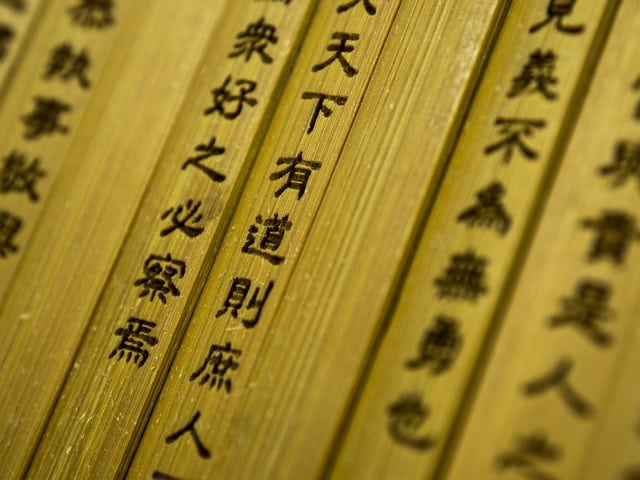
Statue of Confucius, important Chinese thinker whose knowledge makes up Confucianism
Confucianism is the doctrine formed by the rituals and beliefs proposed by Confucius in the 6th century BC . After the death of this Chinese thinker, his disciples took charge of spreading his preachings.
Pillars of Confucianism
The pillars of Confucianism are summarized in five classic books: I Ching (Classic of Mutations), Shujing (Classic of History), Chunqiu (Annals of Spring and Autumn), Li Chi (Book of Rites) and Shijing (Classic of Poetry). ). These works constitute the oldest collection of Confucius ' thought.
* I Ching - This book dates back more than three millennia, as its first versions appeared around 1200 BC. C. It is known that throughout the Zhou dynasty, between 1046 and 256 BC. C., its content was expanded for the first time, and later by members of the Confucian school, although its origin is Taoist;
* Shujing : As the translation of its title indicates, this book documents the history of China. It is made up of 58 chapters, many of which were written in the 4th century BC. C. or even before. Throughout all of them we can find memories of the golden age and the Xia , Shang and Zhou dynasties;
* Chunqiu : in this ancient book we can find a report of events related to the twelve dukes of Lu , a state of the Zhou dynasty, who reigned between 722 and 481 BC. C. The name responds to the fact that these events are arranged according to the season in which they took place;
* Li Chi : This is the description of the norms of society, the ceremonial rites and the government systems of the Zhou dynasty. In chapter 6 we find an interesting description of the Golden Age , a utopian era that, in theory, was lost;
*Shijing : This pillar of Confucianism is also known as the Book of Odes . It is made up of 305 poems, which are divided into popular, ceremonial and festive songs, as well as eulogies and hymns for various ceremonies and court events. It is believed that Confucius himself collected all of these pieces.
Doctrine
Confucianism maintains that each person has a function. The destiny of each individual, in this framework, is determined by Heaven : no one can change the existing division between noble and vile.
Young people, on the other hand, must always subordinate themselves to the elders , just as those in a lower position have to obey those who hold a higher status. For Confucianism, it is essential that man be in harmony with the cosmos (that is, with what is dictated by Heaven), for which he must dedicate himself to study and introspection.
Another relevant aspect in Confucianism is the importance it gives to rituals . These practices allow us to protect the past, constitute a symbol of power and contribute to self-discipline .
It can be said that Confucianism is an ethical system that promotes order . That is why it emphasizes respect for elders and rulers - who must be obeyed - and maintaining hierarchies .
Yes Shu
Beyond the five books mentioned above, in the year 1190 a compilation of four works was published, which are the following:

The Anacletas of Confucius written on bamboo
* Great Learning : a text offering commentaries attributed to Zengzi , a disciple of Confucius;
* Doctrine of mediocrity : focuses on mediocrity , a concept that develops the "middle ground" between two extreme issues;
* Anacletas of Confucius : is the transcription of a series of presentations by Confucius before his disciples ;
* Mencius : a term derived from the sounds that in Chinese express "Master Meng", the name of a philosopher who followed Confucianism.
